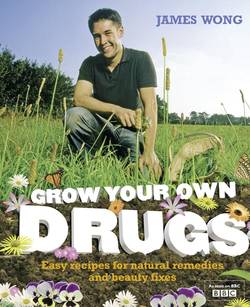Читать книгу Grow Your Own Drugs: A Year With James Wong - James Wong - Страница 18
To dig or not to dig?
ОглавлениеThe first point to note is that garden compost, leaf mould, well-rotted manure or other bulky fertilizers are all considered to be organic matter; granules, pellets or liquid feeds aren’t.
Now, adding organic matter to soil aerates and enriches it, but there is a big debate about whether you should dig it in, or just leave it on the surface and let the worms do the work for you. Being a resolutely lazy gardener, I prefer the second option. Shovel on a load of organic matter in autumn, then leave it over the winter. By next spring the worms will, hopefully, have worked their magic, though you can lightly fork it in then if it’s still clumpy. If you opt for the no-dig approach, you have the added bonus of using the compost layer as a mulch before the worms get to work. This will keep weeds down and moisture in – as well as saving you from a bad ‘digging’ back and blisters! The no-dig approach also means that you can actively improve your soil without damaging the roots of existing plants as you thrust in the spade. In my opinion, albeit very biased, this makes the choice between the dig and no-dig options a real no-brainer.
Heavy clay soils do, however, need a bit more attention: worms may draw organic matter from the surface and incorporate it into the soil, but they will not do the same with the grit or horticultural sand that are vital to improving drainage. The good thing is that you need to dig in the grit only once and it is there for life, so an hour or two of manual labour should transform your soil forever. You could theoretically do this at any time of year, but I reckon the best time to do this is autumn in order to prevent damage to the roots or shoots of plants that are actively growing.
